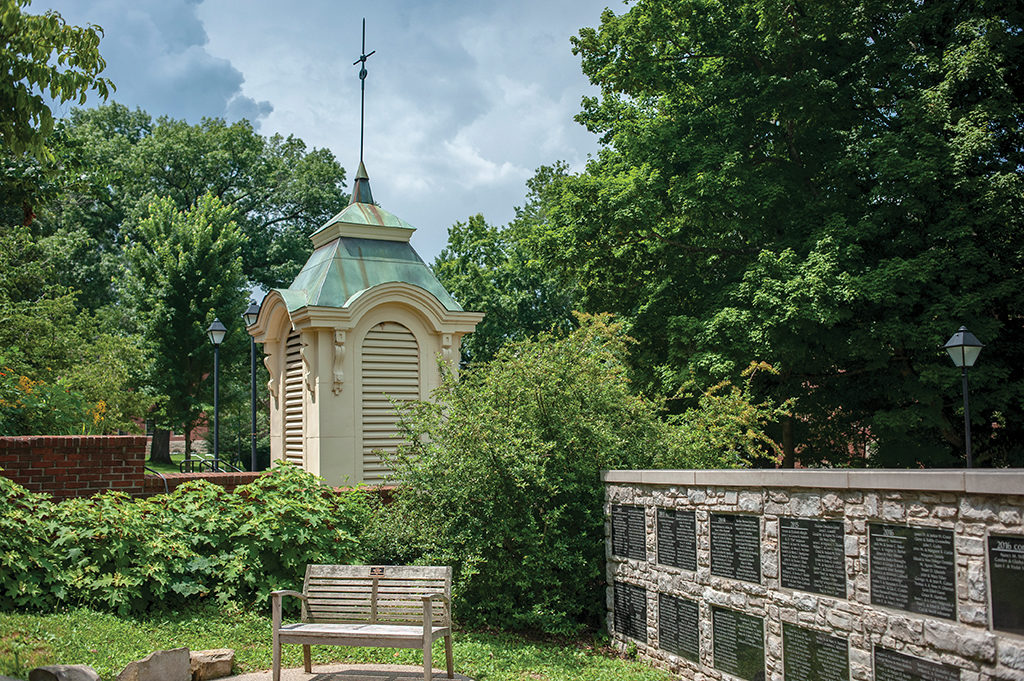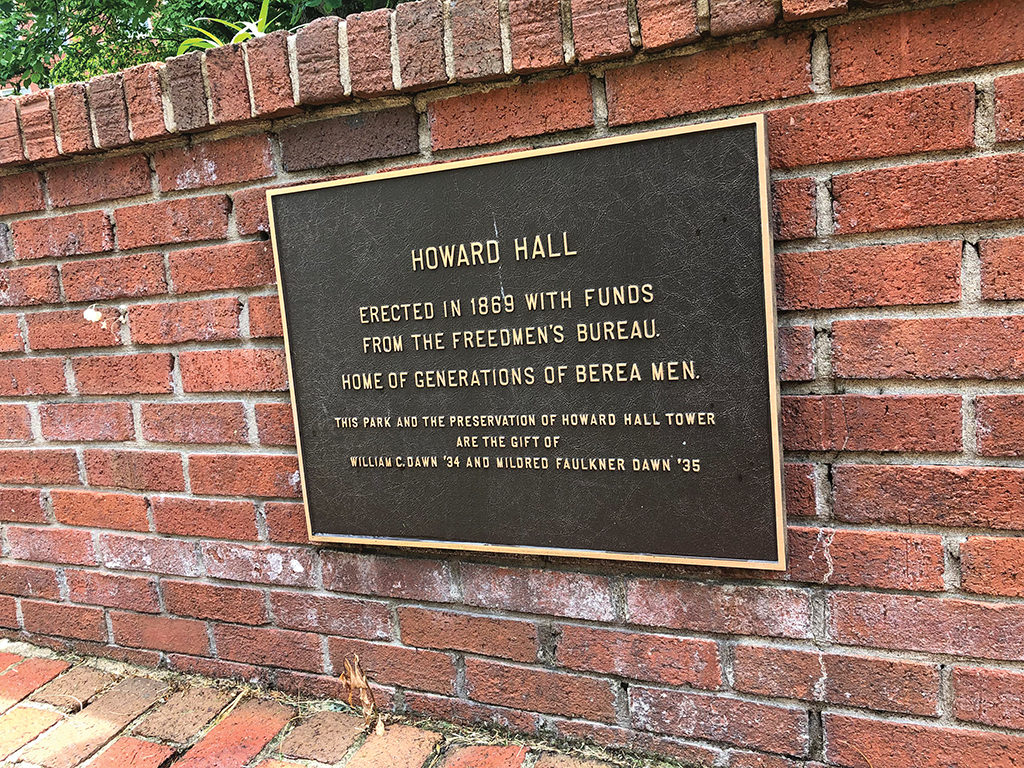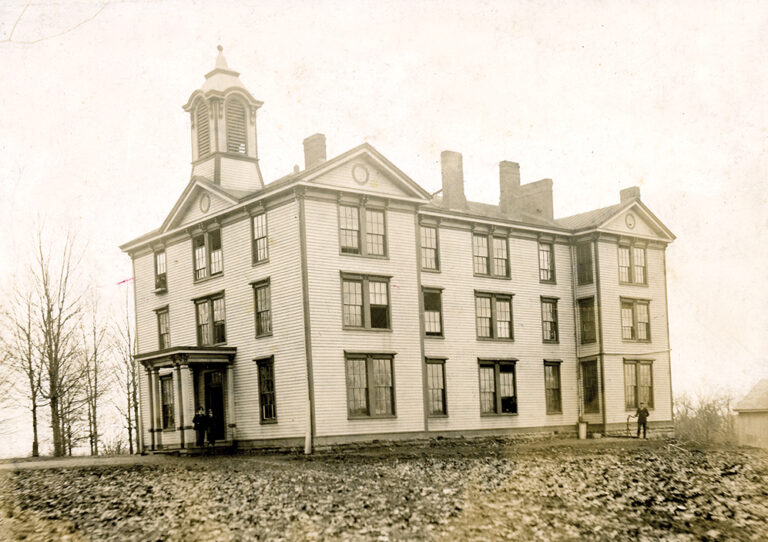Howard Hall, built in 1869, is recognized as the first integrated male residence hall in the South. The $18,000 building was paid for by the Freedmen’s Bureau and named after its chief commander, General Oliver Otis Howard. Photo courtesy of Berea College Special Collections & Archives.
Tucked away beside the Edwards Building on Berea’s campus sits a lone cupola. The tin-roofed and weathervane-enhanced tower stands in remembrance of Berea’s first men’s residence hall—Howard Hall.
Built in 1869, Howard Hall was unique in its time. In fact, John A. R. Rogers wrote, “Howard Hall was the wonder of the section. People came from the mountains to see it.” The white wooden clapboard building stood three stories high with decorative roof and porch soffits. It housed 89 young men under its tin roof.
But what made Howard Hall truly unique was that those 89 men were both black and white, living together in what was the first integrated men’s residence hall in the South. White men and formerly-enslaved black men from Appalachia found a new beginning at Berea College as they sought to be educated together. Inside Howard Hall, as cited in the book, “Berea College: An Illustrated History,” the students “got along well enough that faculty members often were dispatched to quiet the overly cheerful and noisy residents.”

As the Civil War came to an end in 1865, Congress established the Freedmen’s Bureau to help millions of formerly-enslaved men and poor whites in the South in the aftermath of the conflict. The Freedmen’s Bureau provided food, housing and medical aid, established schools and offered legal assistance. Intent on building a “New South,” the Freedmen’s Bureau provided for the completion of the $18,000 residence hall, lending an air of stability to a fledgling institution and giving the College a tangible symbol of its radical ideals and impartial admissions policy.
The Bureau also provided scholarships to emancipated black men to attend Berea College.
In an 1873 letter to donor Gerrit Smith, founder Reverend John G. Fee wrote, “I wish some of you who toiled early in this struggle for national regeneration could come and see. The demonstration is as harmonious and complete as you could possibly expect or desire.”
So it only stood to reason that Fee named the residence hall after the chief commander of the Freedmen’s Bureau, General Oliver Otis Howard. That same year, Howard became the founder and president of Howard University in Washington D.C., which also was coeducational and integrated. He later founded Lincoln Memorial University in Tennessee in 1897. Howard, through his work with the Freedmen’s Bureau, was a leader in promoting higher education among the freedmen and Appalachian whites, and he fought for blacks to have the right to vote, work and gain political power in the South. In 1898, Howard visited Berea College and delivered a Memorial Day speech.
Howard Hall, which occupied the space where Seabury Center sits today—adjacent to Pearsons Hall— included a reading room and two rooms for meetings and social occasions. Each residence room had a stove, two beds, two chairs, a table and a wash stand. Students paid between $2 and $3 per term for boarding, and $2.50 for fuel in the winter. Bathrooms were installed in 1900 and the building was outfitted for steam heat and electricity in 1910.

When Seabury Gymnasium was built in 1928, Howard Hall was moved 100 feet north. With the move, the College added a basement and an additional 12 rooms. It stood until it was razed in 1971. To honor the legacy of this important building, its central cupola was retained and placed as the focal point of Howard Hall Memorial Park.
Today, in its brick-terraced park, the Howard cupola overlooks the Legacy Wall in Fee Glade, which lists more than 3,000 names of those who have included Berea in their wills or made life income agreements with the College, helping to keep Reverend Fee’s vision and Berea’s distinctive mission alive.


